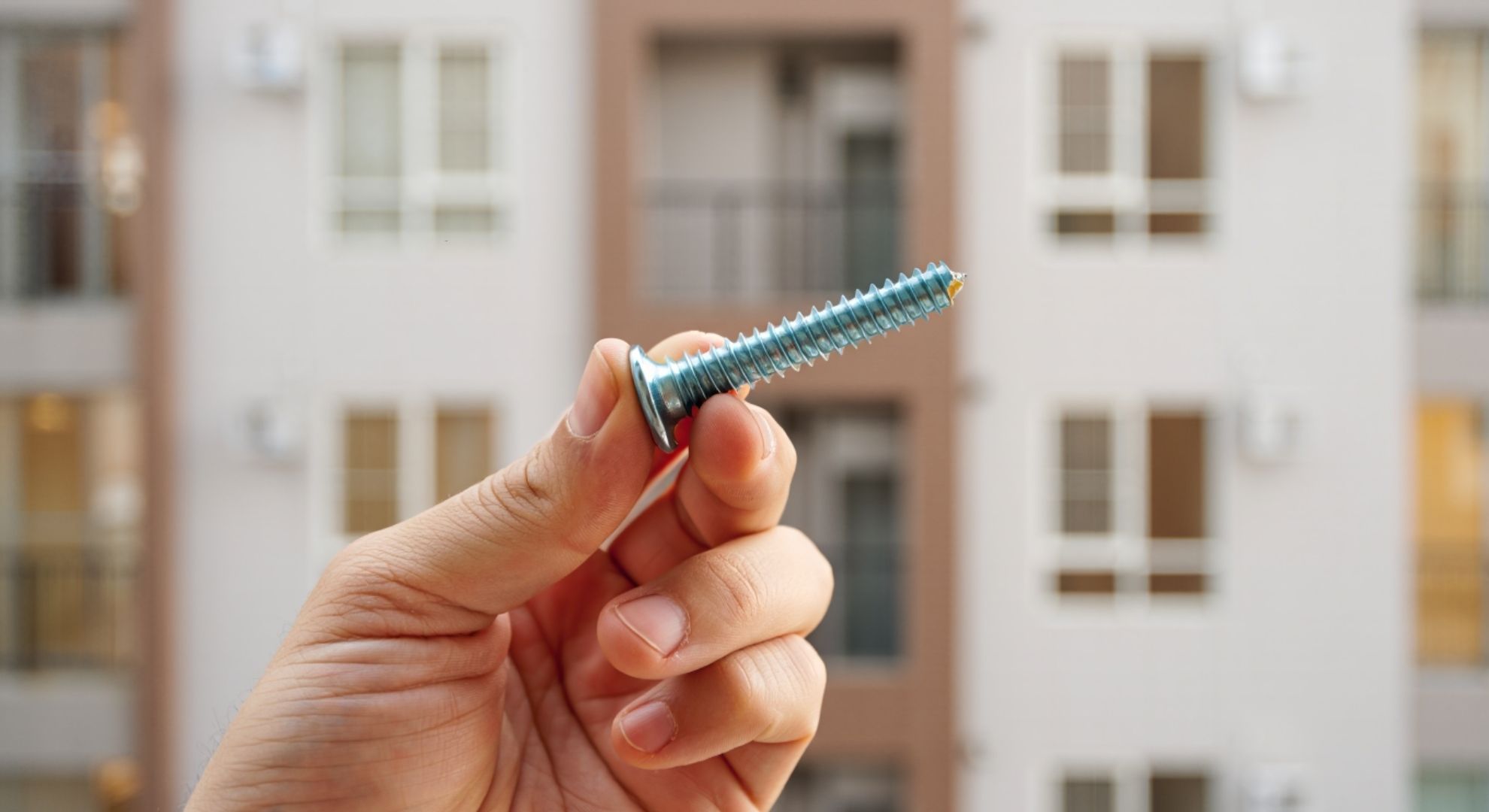The everyday nuisance of noise
Few things are as frustrating as noisy neighbors. Whether it’s loud footsteps, music late at night, or constant movement above your ceiling, noise pollution can affect not only your peace but also your health. Studies show that chronic exposure to household noise can lead to stress, fatigue, and even sleep disorders.
While many people turn to soundproofing panels or legal complaints, researchers and DIY experts have highlighted a surprisingly simple and affordable tool: the humble metal screw.
How a metal screw helps reduce noise
The concept might sound unusual, but it comes down to how buildings transmit sound. Most noise problems in apartments and houses are caused by vibrations traveling through walls, floors, and ceilings. Traditional soundproofing materials try to absorb the noise, but they can be expensive and complicated to install.
By contrast, a strategically placed metal screw system—designed with acoustic insulation in mind—can stabilize structures and reduce vibration transfer. When tightened into the right spots, these screws minimize the resonance that often amplifies noise between shared walls or floors.
“It’s not magic—it’s physics. By reinforcing weak points with the right screws, you cut down the vibration pathways that carry noise,” explains an acoustic engineer.
Where this technique is most effective
This method isn’t about screwing randomly into walls. Specialists recommend using metal screws in specific areas:
- Loose floorboards or ceiling beams: Prevents creaks and vibrations from footsteps.
- Partition walls: Helps tighten and stabilize, reducing sound resonance.
- Metal frames in drywall constructions: Reinforces and limits the “echo effect” within cavities.
The screws themselves don’t block the sound, but they limit the structures’ ability to vibrate, making noise less noticeable.
Comparing methods: screws vs traditional solutions
| Method | Effectiveness | Cost | DIY-friendly? | Durability |
|---|---|---|---|---|
| Metal screws (acoustic use) | Moderate-High | Very low | Yes | Long-term |
| Foam panels | High | Moderate-High | Medium | Moderate |
| Double drywall | Very high | High | No (professional install) | Long-term |
| White noise machines | Low | Low-Moderate | Yes | Short-term |
This shows that while screws won’t replace full-scale professional soundproofing, they provide a low-cost, effective improvement—especially for those who want to reduce everyday disturbances without major renovations.
The advantages of this simple trick
Why is this method gaining popularity among homeowners and renters?
- Affordable: A pack of screws costs just a few euros or dollars.
- Quick fix: Can be done in less than an hour.
- Invisible: Unlike bulky panels, screws leave no visible trace.
- Practical for rentals: A temporary but effective improvement that doesn’t alter the property permanently.
When to consider professional help
While the screw method works for moderate noise problems, it’s not a miracle solution. If you’re dealing with severe sound issues—such as loud music, constant shouting, or construction noise—professional insulation may still be necessary.
In such cases, experts recommend combining the screw reinforcement method with acoustic panels, carpets, or even floating floors for maximum results.
The bottom line
For anyone tired of sleepless nights and constant disturbances, the solution may be much simpler than expected. A metal screw, properly installed, can drastically reduce vibrations and help quiet down noisy neighbors.
It won’t eliminate every sound, but it can turn unbearable noise into something far more manageable—without draining your wallet.
Sometimes, the smallest tools bring the biggest relief.
